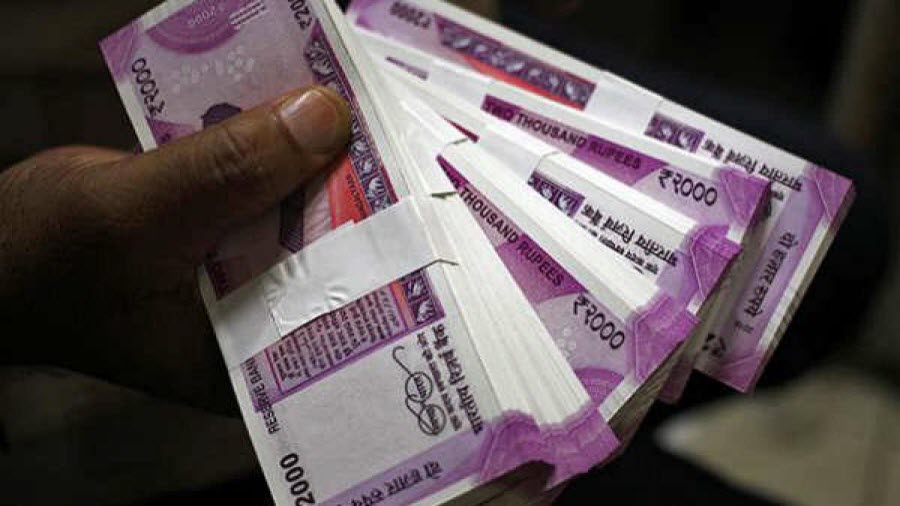As per the recent mandate, The Reserve Bank of India on Friday i.e. 19th May 2023 withdrew ₹2000 currency notes from circulation. The central banks have been asked to provide all deposit and exchange facilities for ₹2000 notes until September 30, 2023. In the meanwhile, the usage of the notes for any purchase purpose is 100% legal.
The ₹2000 rupee note was introduced in November 2016 after the BJP government had introduced demonetization of ₹500 and ₹1000 notes. Since all the denominations of ₹500 and ₹1000 notes were collected, so that the market do not crash, ₹2000 notes were introduced. But now since all the other notes are present in adequate quantity in the market, so govt had decided now to collect the ₹2000 notes denominations back.
As per RBI, they stopped printing these notes way back in 2018, which means RBI always had a plan for these notes but now they have announced it legally. Also, RBI observed that the ₹2000 denomination is not commonly used for transactions and the stock of other denomination notes is adequate to meet the currency requirement of people.
This decision has been taken as per the “Clean Note Policy” of the central banks. People can deposit ₹2000 rupee notes into their bank accounts and/or exchange them at any bank branch. The limit of exchanging the same at a time is ₹20,000. This exchange can be done from 23rd May 2023.
What is “CLEAN NOTE POLICY”?
The Reserve Bank of India (RBI) has implemented a Clean Note Policy to ensure the circulation of clean, hygienic, and genuine currency notes in the Indian economy. The main objectives of RBI’s Clean Note Policy are as follows:
Currency processing:
The RBI establishes currency processing centers where banks and financial institutions can send currency notes for sorting, authentication, and verification. These centers use automated machines and technologies to detect counterfeit notes, sort notes by denomination, and ensure the quality of the currency in circulation.
Withdrawal of unfit notes:
The RBI regularly withdraws worn-out, damaged, or counterfeit currency notes from circulation through the banking system. These notes are replaced with new or refurbished notes to maintain the integrity of the currency.
Exchange of soiled notes:
The RBI facilitates the exchange of soiled or mutilated currency notes through designated bank branches. Individuals and businesses can deposit such notes in their bank accounts or exchange them for clean notes.
Public cooperation:
The Clean Note Policy encourages the public to handle currency notes carefully and responsibly. Individuals are urged to keep notes clean, avoid writing or making any markings on them, and refrain from stapling or pinning notes together.
Education and awareness:
The RBI conducts public awareness campaigns and programs to educate people about the importance of clean notes. These initiatives aim to promote responsible note-handling practices, raise awareness about counterfeit currency, and encourage the public to cooperate in maintaining the cleanliness and genuineness of the currency.
It’s important to note that the specific guidelines and procedures of RBI’s Clean Note Policy may be periodically updated to adapt to changing circumstances and technological advancements.
The decision to roll back the ₹2000 rupee note is considered a good move for several reasons:
Improved usability:
The ₹2000 rupee note was not designed for everyday transactions, making it less user-friendly for common people. Rolling back these notes and ensuring an adequate quantity of other denominations in the market makes transactions more convenient for the general public.
Curbing illegal activities:
The higher denomination of the ₹2000 note made it attractive for illegal activities such as money laundering, terrorist financing, and hoarding of cash. Withdrawing these notes helps to curb such activities by making it more difficult to store and transfer large sums of money discreetly.
Identifying users:
Since the ₹2000 notes rarely circulated among the general public during their lifespan, it raises questions about who was predominantly using them. Withdrawing these notes can aid in identifying the sources and channels through which these notes were being utilized.
Addressing currency issues:
Demonetization is often used by governments to tackle uncontrollable currency issues, such as combating counterfeiting and addressing hyperinflation. By withdrawing the ₹2000 notes, the government can address any concerns related to counterfeit currency.
Curbing criminal activities:
Demonetization can help in curbing various criminal activities, including counterfeiting, terrorism, and tax evasion. By invalidating a specific currency note, it becomes harder for criminals to engage in such activities using large quantities of cash.
Establishing currency standard:
Demonetization can also be used as a means to establish a new currency standard or introduce new security features in the currency system. It provides an opportunity for the government to revamp the currency and enhance its security features.
Consideration for the banking sector:
While demonetization has its benefits, it is essential for the government to ensure that the banking sector is adequately prepared to handle the impact of such a move. This includes managing the influx of currency deposits and facilitating smooth transactions for the public.
Impact on counterfeiting:
Demonetization poses difficulties for counterfeiters, especially those involved in producing counterfeit Indian currency from neighboring countries like Pakistan. By withdrawing and introducing new currency notes, the government aims to disrupt such illegal operations and protect the integrity of the currency.







